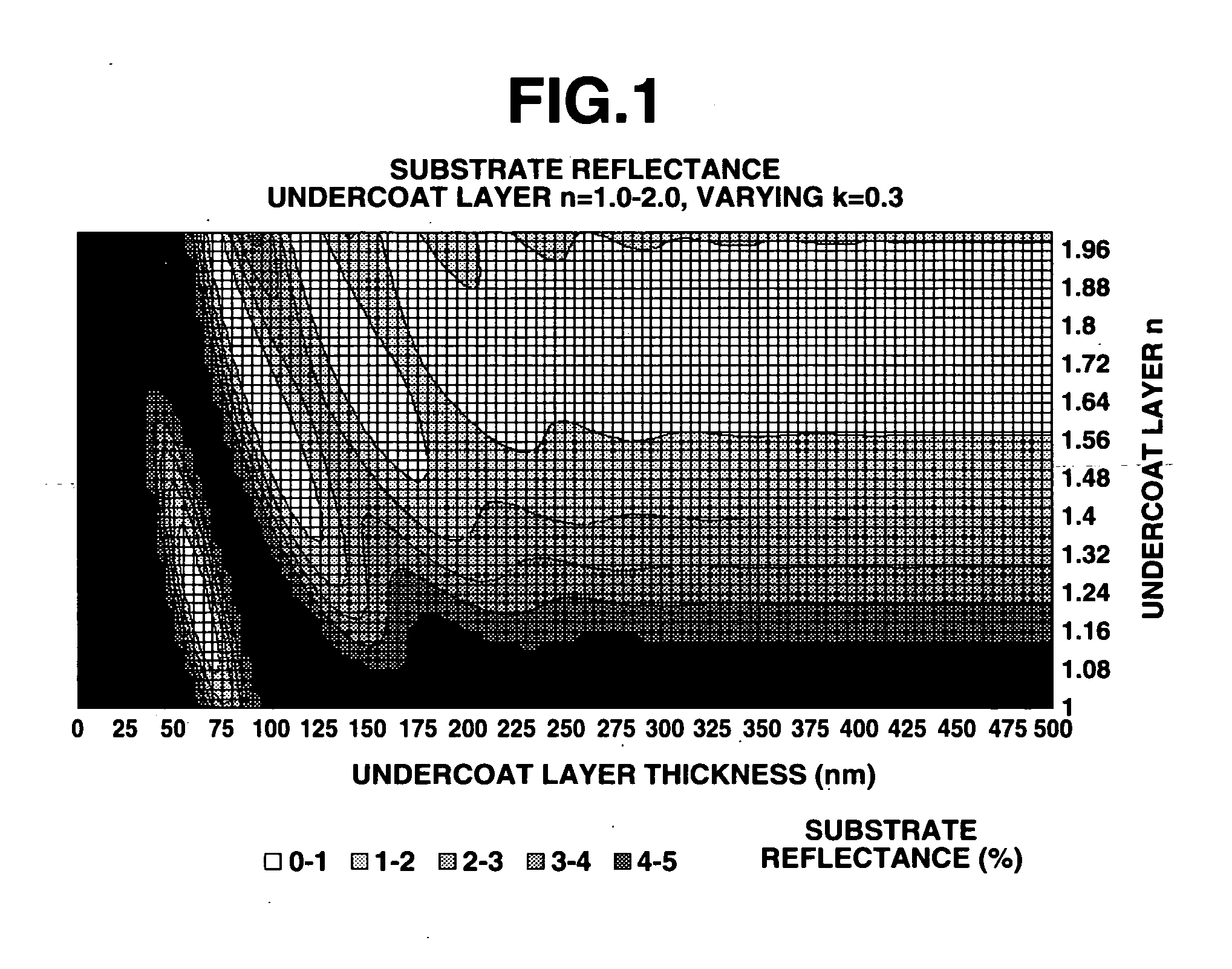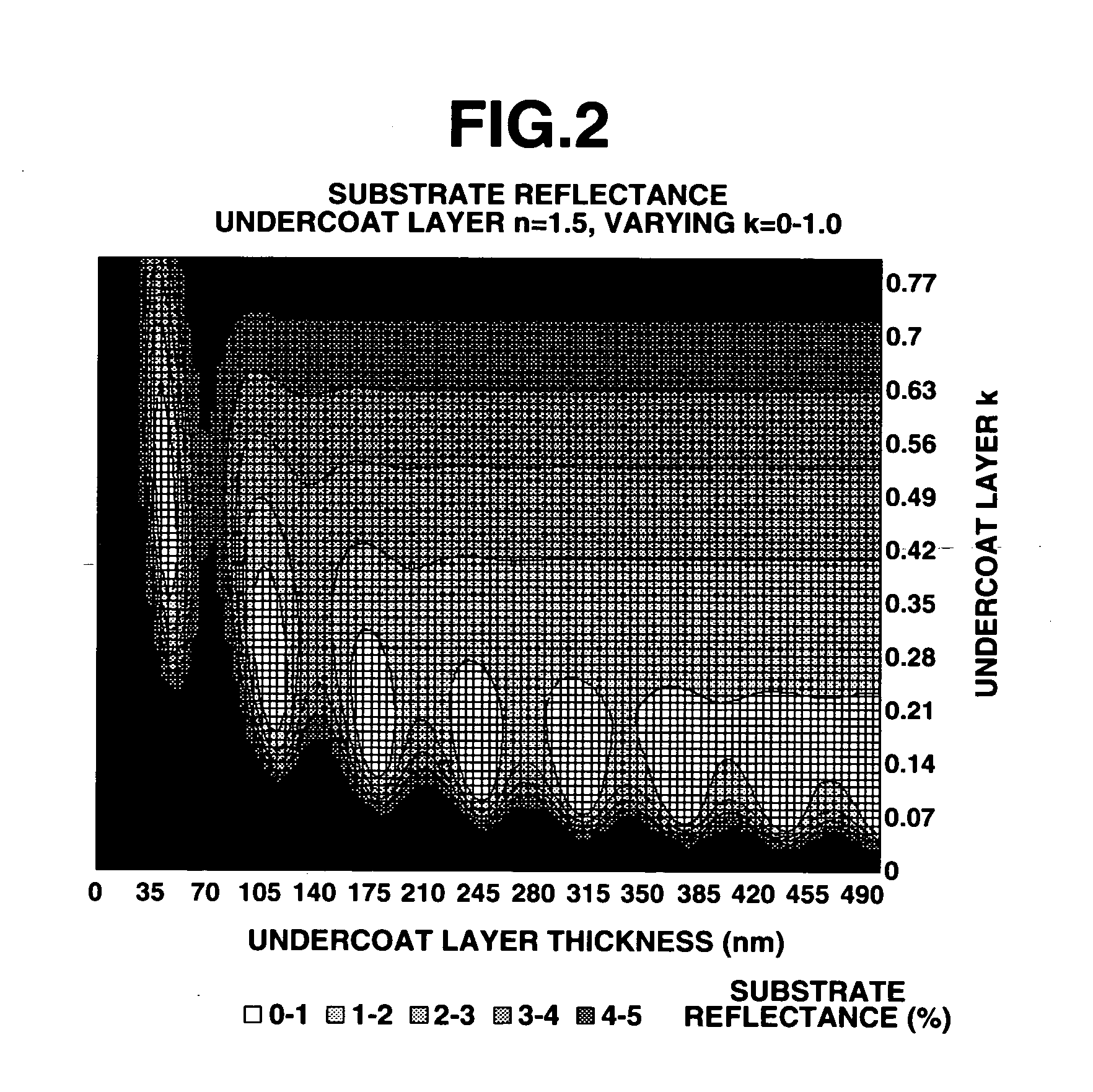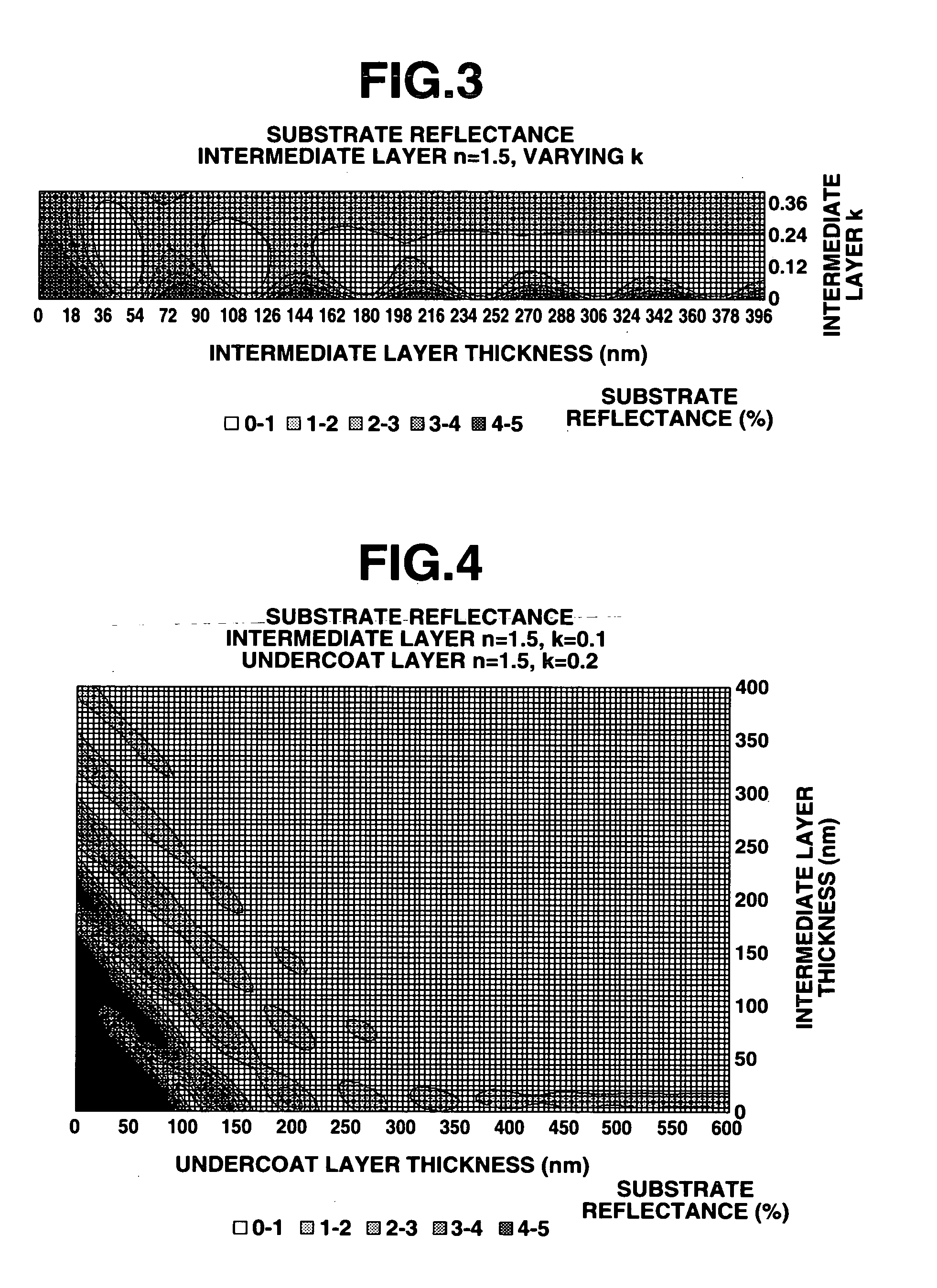Resist undercoat-forming material and patterning process
a technology of resisting undercoat and patterning, applied in the field of resisting undercoat, can solve the problems of increasing surface roughness after etching to a serious concern, weak resistance of acrylic polymer to substrate etching, and approaching the essential limit of resolution determined by light source wavelength, etc., to achieve the effect of improving etching resistance and transparency
- Summary
- Abstract
- Description
- Claims
- Application Information
AI Technical Summary
Benefits of technology
Problems solved by technology
Method used
Image
Examples
synthesis example 1
[0289] A 200-ml flask was charged with 9.1 g of acenaphthylene, 6.9 g of 5-hydroxy-1-vinylnaphthalene, and 20 g of 1,2-dichloroethane as a solvent. In a nitrogen atmosphere, 0.5 g of boron trifluoride as a polymerization initiator was added to the reactor, which was heated to 60° C., whereupon reaction occurred for 15 hours. The reaction solution was concentrated to ½ and poured into a mixture of 2.5 L methanol and 0.2 L water for precipitation. The resulting white solids were filtered and vacuum dried at 60° C., yielding a white polymer, designated Polymer 1.
[0290] The polymer was analyzed by 13C- and 1H-NMR and GPC, with the results being shown below. [0291] Copolymer compositional ratio (molar ratio) 5-hydroxy-1-vinylnaphthalene:acenaphthylene=40:60 [0292] Mw=6,800 [0293] Mw / Mn=1.72
synthesis example 2
[0294] A 200-ml flask was charged with 9.1 g of acenaphthylene, 6.9 g of 6-hydroxy-2-vinylnaphthalene, and 20 g of 1,2-dichloroethane as a solvent. In a nitrogen atmosphere, 0.5 g of boron trifluoride as a polymerization initiator was added to the reactor, which was heated to 60° C., whereupon reaction occurred for 15 hours. The reaction solution was concentrated to ½ and poured into a mixture of 2.5 L methanol and 0.2 L water for precipitation. The resulting white solids were filtered and vacuum dried at 60° C., yielding a white polymer, designated Polymer 2.
[0295] The polymer was analyzed by 13C- and 1H-NMR and GPC, with the results being shown below. [0296] Copolymer compositional ratio (molar ratio) 6-hydroxy-2-vinylnaphthalene:acenaphthylene=40:60 [0297] Mw=7,400 [0298] Mw / Mn=1.83
synthesis example 3
[0299] A 200-ml flask was charged with 7.0 g of indene, 6.9 g of 6-hydroxy-2-vinylnaphthalene, and 20 g of 1,2-dichloroethane as a solvent. In a nitrogen atmosphere, 0.5 g of boron trifluoride as a polymerization initiator was added to the reactor, which was heated to 600C, whereupon reaction occurred for 15 hours. The reaction solution was concentrated to ½, and poured into a mixture of 2.5 L methanol and 0.2 L water for precipitation. The resulting white solids were filtered and vacuum dried at 60° C., yielding a white polymer, designated Polymer 3.
[0300] The polymer was analyzed by 13C- and 1H-NMR and GPC, with the results being shown below. [0301] Copolymer compositional ratio (molar ratio) 6-hydroxy-2-vinylnaphthalene:indene=40:60 [0302] Mw=15,000 [0303] Mw / Mn=1.92
PUM
| Property | Measurement | Unit |
|---|---|---|
| wavelength | aaaaa | aaaaa |
| size | aaaaa | aaaaa |
| reflectance | aaaaa | aaaaa |
Abstract
Description
Claims
Application Information
 Login to View More
Login to View More - R&D
- Intellectual Property
- Life Sciences
- Materials
- Tech Scout
- Unparalleled Data Quality
- Higher Quality Content
- 60% Fewer Hallucinations
Browse by: Latest US Patents, China's latest patents, Technical Efficacy Thesaurus, Application Domain, Technology Topic, Popular Technical Reports.
© 2025 PatSnap. All rights reserved.Legal|Privacy policy|Modern Slavery Act Transparency Statement|Sitemap|About US| Contact US: help@patsnap.com



